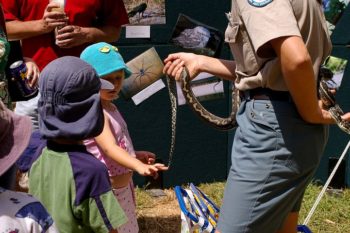 How to Make Writing Fun (Part 2)
How to Make Writing Fun (Part 2)
Most students feel challenged to complete their writing assignments. As an intervention elementary school teacher, I love to empower students with imaginative and engaging writing assignments. For example, my second-grade students wanted to learn more about rattlesnakes after hearing my personal story about being bitten by a rattlesnake. Here is an outline of questions they asked for our writing activity:
- How did I get bitten by the rattlesnake?
- Why do snakes bite people?
- Where was I when it happened?
- What did the bite feel like?
- Did I catch the snake or did it get away?
- What did I do after the bite?
- Did I phone 911?
- Did an ambulance transport me to the hospital?
- What did I do while waiting for the ambulance?
- What happened when I arrived at the hospital?
- What type of medication did the doctors use to fight a venomous snake bite?
- What does venomous, antivenom, and antidotes mean?
- How is antivenom created?
- What types of animals help create antivenom antidotes?
- How long did it take to get better?
- Do I still have problems with the bite?
- What can a person do so they do not get a snake bite?
How To Help Kids Research Information
I was overwhelmed with the wide range of questions the students asked about my snake bite adventure. I also could not answer all of their questions. So, I talked with our school librarian and together we identified 14 library books that I could use with the students. I also researched scientific articles about how to make antivenom and a human body’s response to venomous snake bites. Then I printed copies of the online articles for the students. Once I compiled my source documents, I reviewed each book and article and bookmarked specific pages that might answer the students’ questions.
The next day I handed each student a book or scientific article as I summarized the content of each item. Some students chose to challenge themselves and read the college-level scientific articles. Others preferred picture books with lots of photos. Some wanted to read basic snake books. I wrote all of the students’ questions on a large sheet of paper and posted it to guide them in their research. Then I gave the students lots of time to research, write, and illustrate their stories. The energy in the classroom was incredibly exciting for all.
What Students Learned
Most students wrote a well written report about the various characteristics of rattlesnakes and their ability to bite. Many graphically illustrated how a snake would bite its victim. Several highlighted the main ideas of how to create antivenom in their research articles and asked me the definitions of numerous medical terms as they summarized the content of these articles in their reports. Thankfully, I have researched the topic extensively due to periodic foot pain resulting from the snake bite. I also live in a large city that only reports two rattlesnake bite victims each year so local doctors are interested in helping me with any health challenges.
After the class finished the project, each student stood up in front of their classmates and reported one new fact that they learned from writing their report. None of these students had ever presented research to their peers before. All participated and were proud of their work. Some of the students needed to read one or two sentences to explain their idea but they were pleased with the results of their project.
What I Learned
As an educator, I learned that students truly can direct their style of learning to achieve academic successes as described in Student-Engaged Assessment: Strategies to Empower All Learners by Laura Greenstein and Mary Ann Burke. I also recognized that this activity would build on other required writing competencies for second graders that that will be described in my March 28th blog.

Mary Ann Burke, Ed.D., Digital Education Expert, is a substitute distance learning teacher for Oak Grove School District in San Jose, California and the author of STUDENT-ENGAGED ASSESSMENT: Strategies to Empower All Learners (Rowman & Littlefield: 2020). Dr. Burke creates digital language arts and substitute teaching K – 12 activities for teachers and parents. She is the Cofounder of the Genparenting.com blog. Burke is the former Director II of Categorical & Special Projects for the Santa Clara County Office of Education that supports 31 school districts serving 272,321 students in Santa Clara County. She is also a previous Director – State & Federal Compliance for Oakland Unified School District, the former Director – Grantwriter for the Compton Unified School District, and was the initial VISTA Director for the Community Partnership Coalition in southern California. Much of her work focuses on creating innovative digital trainings and partnership programs for teachers and families to support students’ learning. These programs were featured as a best practice at a National Title I Conference, California’s Title I Conferences, AERA Conferences, an ASCD Conference, the NASSP Conference, and statewide educator conferences.

